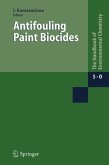The inorganic and organic water constituents, often called color-producing agents (CPAs), responsible for water color are generally referred to as water quality parameters. Utilization of water color for assessment of water quality parameters can be achieved by using the established techniques in aquatic optics attained over many decades. Aquatic optics can be subdivided according to whether the natural water body is salty (marine), inland or fresh (limnological), or coastal (often brackish). The authors describe the transformation of water color under varying natural and anthropogenically-driven conditions and, for the first time in a quantitative manner, a closed circle of issues related to remote sensing of water quality in optically complex waters generally inherent to inland and marine coastal waters. Primarily, the text synthesizes the solutions of problems in remote sensing, incorporating mathematics, hydrobiology/hydochemistry, atmospheric optics and ecology.








